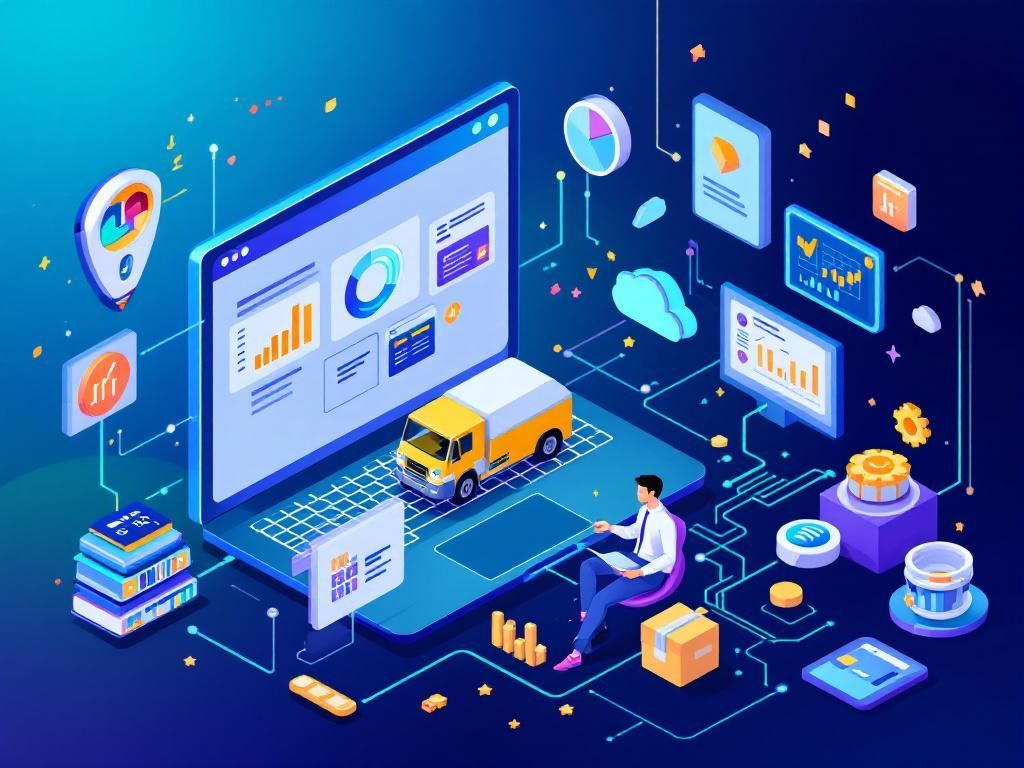Boost Efficiency with AI in IT Service Management
Discover how AI can enhance IT service management efficiency, streamline processes, and improve user satisfaction in your organization.

In the rapidly evolving landscape of information technology, businesses are continuously seeking ways to enhance operational efficiency and reduce costs. One of the most transformative advancements in recent years has been the integration of Artificial Intelligence (AI) into IT Service Management (ITSM). By leveraging AI capabilities, organizations can streamline their IT processes, optimize resource allocation, and improve customer satisfaction. This article delves into how AI-driven ITSM can revolutionize the way businesses operate.
Table of Contents
Understanding AI in IT Service Management
AI in ITSM refers to the use of artificial intelligence technologies to improve and automate IT service delivery. This can involve various AI techniques, including machine learning, natural language processing, and predictive analytics. The primary goal is to enhance the efficiency of IT services by automating routine tasks, offering intelligent insights, and enabling proactive decision-making.
Key Components of AI-Driven ITSM
- Automation: AI automates repetitive tasks such as ticket routing, status updates, and reporting, allowing IT personnel to focus on more strategic initiatives.
- Intelligent Virtual Agents: Chatbots and virtual assistants provide 24/7 support, handling common queries and issues without human intervention.
- Predictive Analytics: By analyzing historical data, AI can predict outages and performance issues before they occur, enabling proactive management.
- Self-Service Portals: AI-driven self-service options empower users to resolve issues independently, reducing the workload on IT teams.
Benefits of Integrating AI into ITSM
Integrating AI into ITSM frameworks offers numerous benefits that can lead to increased productivity and enhanced service delivery. Here are some of the most notable advantages:
1. Increased Operational Efficiency
By automating routine tasks, AI significantly enhances operational efficiency. This allows IT teams to dedicate more time to complex projects, ultimately leading to faster service delivery.
2. Enhanced User Experience
AI-driven tools, such as chatbots and virtual agents, provide users with immediate responses, improving overall satisfaction. This leads to a more seamless experience for employees and customers alike.
3. Cost Reduction
AI helps organizations minimize costs by reducing the need for extensive manpower to manage IT services. Additionally, predictive maintenance can decrease downtime and associated costs.
4. Improved Decision-Making
With access to comprehensive analytics and insights provided by AI, decision-makers can make more informed choices that align with business objectives.
5. Scalability
AI systems can easily scale with the organization, adapting to increased workloads without the need for significant adjustments or additional resources.
Implementing AI in ITSM: Steps to Success
Implementing AI in ITSM is a strategic process that requires careful planning and execution. Here are the key steps to ensure successful integration:
Step 1: Assess Current ITSM Processes
Evaluate existing ITSM processes and identify areas where automation and AI can add value. This analysis will help in understanding the specific needs and requirements of the organization.
Step 2: Define Objectives
Set clear objectives for the AI implementation, focusing on desired outcomes such as improved response times, reduced ticket resolution times, or enhanced user satisfaction.
Step 3: Select the Right Tools
Choose AI tools and platforms that align with the organization’s ITSM strategy. Consider factors such as integration capabilities, scalability, and user-friendliness.
Step 4: Train Staff
Provide training to IT staff on how to utilize AI tools effectively. Ensure that team members are comfortable with the technology and understand its benefits.
Step 5: Monitor and Optimize
Continuously monitor the performance of AI-driven ITSM processes and gather feedback to identify areas for improvement. Optimize the system based on evolving organizational needs.
Challenges in AI Implementation
While the potential benefits of AI in ITSM are significant, organizations may face several challenges during implementation. Understanding these challenges can help mitigate risks and ensure a smoother transition:
1. Data Quality and Availability
AI systems rely on high-quality data to function effectively. Organizations must ensure that their data is clean, structured, and accessible.
2. Change Management
The introduction of AI may meet resistance from staff who are wary of new technologies. Effective change management strategies are essential to foster acceptance and engagement.
3. Skill Gaps
There may be a skills gap in the existing workforce when it comes to managing and utilizing AI technologies. Organizations must invest in training and development to bridge this gap.
4. Security and Compliance
As with any technology implementation, security and compliance must be prioritized. Organizations need to ensure that AI solutions adhere to industry standards and regulations.
Future Trends in AI-Driven ITSM
The field of AI in ITSM is continuously evolving, and staying ahead of emerging trends is critical for organizations. Some future trends to watch include:
1. Enhanced Natural Language Processing
Advancements in natural language processing will enable AI systems to understand and interpret user queries more accurately, leading to improved communication between users and IT systems.
2. Augmented AI Capabilities
As AI technology advances, tools will become more sophisticated, offering enhanced predictive capabilities and insights that can further streamline ITSM processes.
3. Greater Integration with Other Technologies
AI will increasingly integrate with other cutting-edge technologies, such as the Internet of Things (IoT) and blockchain, to enhance IT service delivery.
4. Focus on Cybersecurity
With the rise of cyber threats, AI will play a crucial role in enhancing cybersecurity measures within ITSM frameworks, proactively identifying and mitigating risks.
Conclusion
The integration of AI into IT Service Management is no longer a matter of ‘if’ but ‘when.’ Organizations that embrace AI technologies stand to gain a competitive edge by improving efficiency, reducing costs, and enhancing user experiences. By understanding the components, benefits, and implementation strategies of AI-driven ITSM, businesses can position themselves for future success in a technology-driven world.
FAQ
What is AI IT Service Management?
AI IT Service Management refers to the integration of artificial intelligence technologies into IT service management processes to enhance efficiency, automate tasks, and improve decision-making.
How can AI improve IT service delivery?
AI can improve IT service delivery by automating repetitive tasks, providing predictive analytics for better resource allocation, and enabling faster incident resolution through intelligent chatbots and virtual assistants.
What are the benefits of using AI in ITSM?
The benefits of using AI in ITSM include reduced operational costs, improved service quality, enhanced user experience, increased agility in service delivery, and the ability to proactively address issues before they impact users.
Can AI help in incident management?
Yes, AI can significantly enhance incident management by automating ticketing processes, analyzing incident patterns for root cause identification, and suggesting resolutions based on historical data.
Is AI IT Service Management suitable for all businesses?
AI IT Service Management can be beneficial for businesses of all sizes, but its implementation should be tailored to the specific needs, scale, and existing processes of each organization.
What tools are commonly used for AI IT Service Management?
Common tools used for AI IT Service Management include ServiceNow, BMC Helix, Freshservice, and Zendesk, which integrate AI features to enhance service management capabilities.







